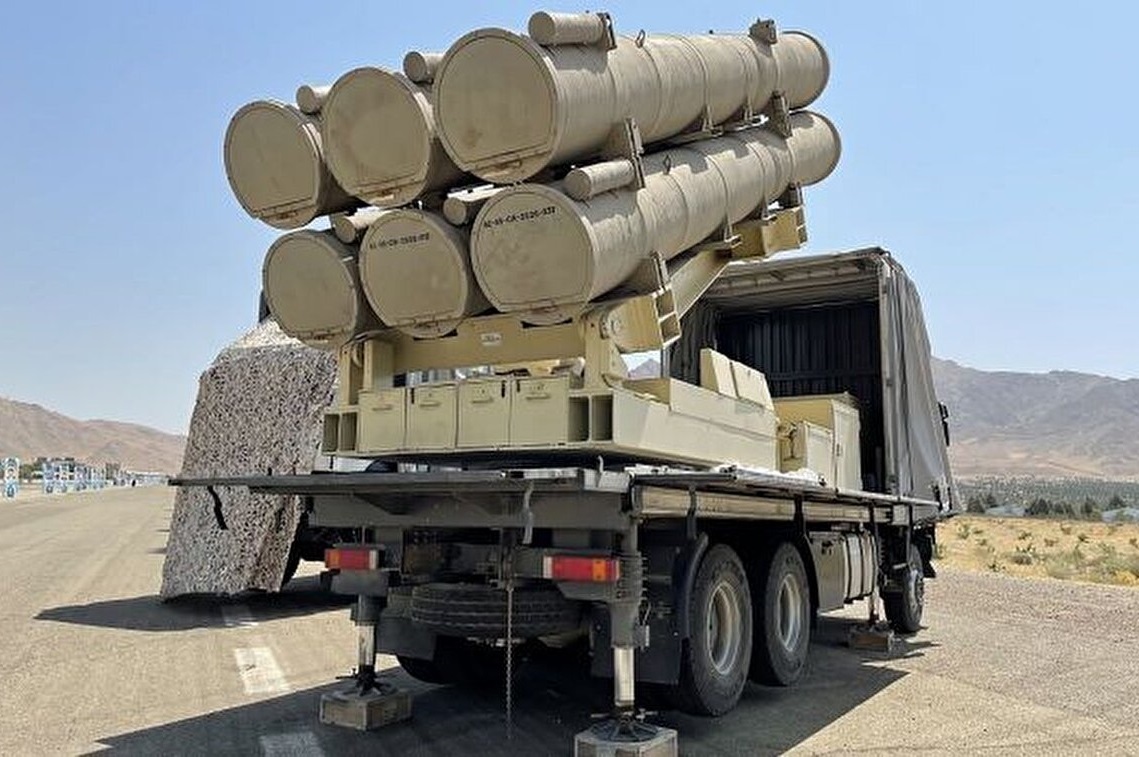The Armful of Iran's Army and IRGC Ground Forces with "Fath-360" Missiles
TEHRAN (Defapress) - Missiles, which possess unique capabilities in destroying distant and nearby targets, form a major part of the Islamic Republic of Iran's armed forces' strategy in asymmetric warfare.

Iran's missile capabilities have always been a source of anxiety for Western governments and their affiliated media. Recently, claims were made regarding one of Iran's ballistic missiles named the "Fath-360," though this was denied by Iran’s representation at the United Nations. Beyond the psychological warfare waged by enemies on various issues, this report focuses on the capabilities of the Fath-360 missile.
Short-range ballistic missiles and high-caliber rockets are essential equipment for any country's ground forces, usable in critical battles. The "Fath" family of missiles holds a distinguished position in this regard, as it strengthens the punch of the Army and IRGC Ground Forces in engagements with enemies.
One of the short-range ballistic missiles used by the Islamic Republic of Iran's Army Ground Forces and the IRGC Ground Forces is the Fath-360, which has unique capabilities in asymmetric warfare. These missiles can be used in cross-border asymmetric battles or in clashes with terrorists in the southeastern, northwestern, and western borders. For example, Iran’s armed forces used these missiles in strikes against PJAK terrorist positions.
The Fath-360 has many advantages in terms of performance and capability compared to the Fajr family. Today, the most famous short-range rockets in use are the Fajr-class rockets, with a range of 20 to 80 kilometers. However, the Fath-360, with a range exceeding 100 kilometers and significantly lower margin of error than the Fajr missile, is in a much better position in terms of operational usability.
Media reports indicate that the margin of error for Fajr rockets can reach several dozen meters, whereas the Fath-360 missile, with a warhead weighing around 150 kg, a total weight of about one ton, and an error margin of less than 30 meters, performs better than the Fajr rocket.
Brigadier General Nozar Nemati, Deputy Commander of the Army Ground Forces, stated about the Fath-360 ballistic missile: "This missile is used against strategic targets at a speed of Mach 3. While communicating with satellites for rapid navigation, it reaches approximately Mach 4 (close to 5,000 km/h) upon hitting the target."
He added: "The strategic Fath-360 missile, with extraordinary destructive power and very high accuracy, is launched from a six-missile launcher. After firing, it tracks and destroys a single target."
Destroying Targets and Military Installations with the Fath-360 Missile
The Fath-360 missile has also drawn serious attention from foreign media. The website "Ukraine News", listing the characteristics of the Fath-360 ballistic missile, made claims about the transfer of its launchers to Russia, stating: "This missile has a range equivalent to 120 km and can strike military targets and installations."
The website added: "The Fath-360 missile does not require extensive logistics and hits targets with high precision. Additionally, these missiles do not carry heavy warheads and have unique operational capabilities."
The website "Army Recognition" said about the Fath-360 ballistic missile: "This is a tactical precision-guided missile produced by Iran’s aviation industries in 2022. With easy transportability, it can strike targets with good accuracy."
The website further stated: "The modified launch system (referring to the missile’s cylindrical and cube-shaped launchers) allows for rapid deployment from specialized wheeled platforms or trucks, making the Fath-360 highly mobile and resilient, especially in environments where anti-missile systems are constantly in use."
